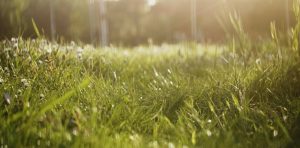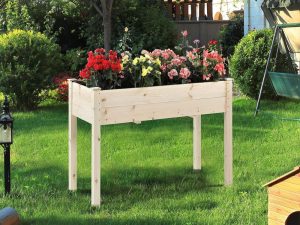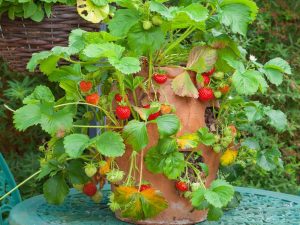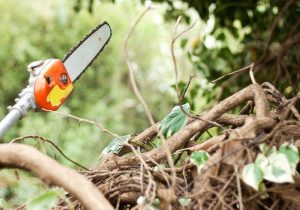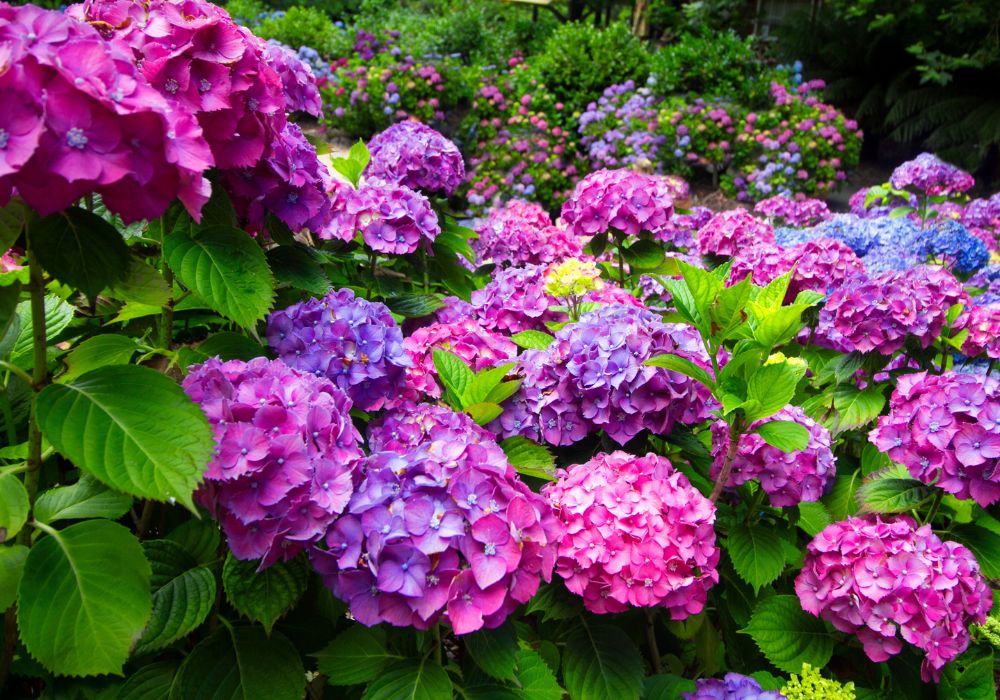
Gardeners especially love hydrangeas for their vivid blossoms and rich foliage since they will accentuate any terrain. But a range of pests and diseases can target these lovely plants, so compromising their health and appeal. Maintaining healthy hydrangeas mostly depends on early identification of trouble signs and knowledge of how to solve these problems.
This guide is meant to assist homeowners in spotting common hydrangea pests and diseases and offer doable remedies to treat them, so ensuring that your hydrangeas will keep flourishing season after season.
Hydrangea Basics
Contents
Hydrangeas stand out in the garden with their arresting, voluminous blossoms. It captivate visitors from spring through fall. Apart from their looks, hydrangeas are versatile since they can be used as stand-alone objects.They can also be dynamic garden settings by being included into borders and flower beds.
Apart from their look, hydrangeas are loved for their forgiving growing requirements. Though they can grow in a range of environments and thrive in locations with morning sunlight and afternoon shadow. Because of their resilience and rather low maintenance, hydrangeas are a common choice for both novice and experienced gardeners seeking to highlight the natural beauty of their outdoor areas.
Identifying Common Pests
A range of garden pests are drawn to hydrangeas because of their rich foliage and magnificent blossoms. If not quickly recognized and managed, these unwelcome guests can seriously disrupt things. Maintaining the health and beauty of hydrangeas depends on knowing the typical pests that target them and identifying early infestation symptoms.
We list some of the most common offenders below together with pointers on how to quickly find and treat them.
Aphids
Little soft-bodied insects, aphids gather on the undersides of leaves and delicate flower buds. Among the most common pests afflicting hydrangeas, they suck sap from the plants, so causing distorted development and a compromised general condition. Honeydew, a sticky material produced by aphids, can draw ants and help sooty mold on the leaves to flourish.
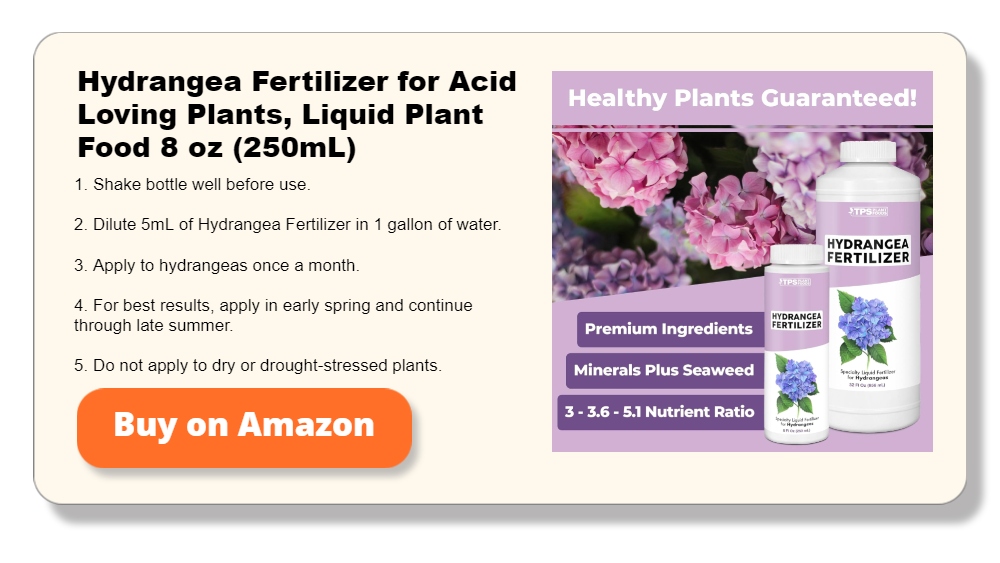
Spider Mites
Another ubiquitous hazard to hydrangeas, especially in dry, hot conditions, are spider mites. Though invisible to the unaided eye, the fine, silky webs these microscopic pests create on the undersides of leaves help one to identify them. When spider mites pierce plant cells to eat, leaves turn yellow, become speckled, and finally drop off if the infestation is not under control.
Scale Insects
Because of their hard protective coverings, which guard them from many insecticides, scale insects can be a more difficult challenge. Attaching themselves to hydrangea stems and leaves, these pests eat on the sap, so weakening the plant. On the surfaces of the plant, scales might show as little, brown, oval-shaped lumps. Usually showing yellowing leaves and a general loss of vigor among infested plants.
Leaf Beetles
These beetles chew on the leaves, leaving holes and occasionally tying them together to form a shelter from which they might eat undisturbed. Indices of leaf beetles are chewed leaves and the distinct leaf tie.
Early identification and treatment of these common pests will help greatly reduce their effects on hydrangeas. Frequent pest inspections of your hydrangeas combined with quick treatment will help to guarantee that these garden favorites stay healthy and appealing. Keeping a garden diary can also be beneficial in tracking pest activity and effectiveness of your management strategies over time, so enabling more focused and successful interventions in next seasons.
Recognizing Typical Diseases
Hydrangeas, while robust and visually striking, are susceptible to several diseases that can compromise their health and diminish their aesthetic appeal. Early detection of these diseases is vital, as it allows gardeners to take appropriate actions to manage their spread. Below, we detail the typical diseases that afflict hydrangeas, focusing on the description and symptoms of each to aid in accurate identification.
Powdery Mildew
Powdery mildew is a fungal disease that appears as a white or gray powdery coating on the leaves and stems of hydrangeas. It typically occurs in warm, dry environments and is more prevalent when nights are cool and humid. Infected plants may display distorted leaf growth, and severely affected leaves can yellow and fall prematurely. This disease tends to cover the surface of the leaves, often starting on the lower leaves and moving upward.
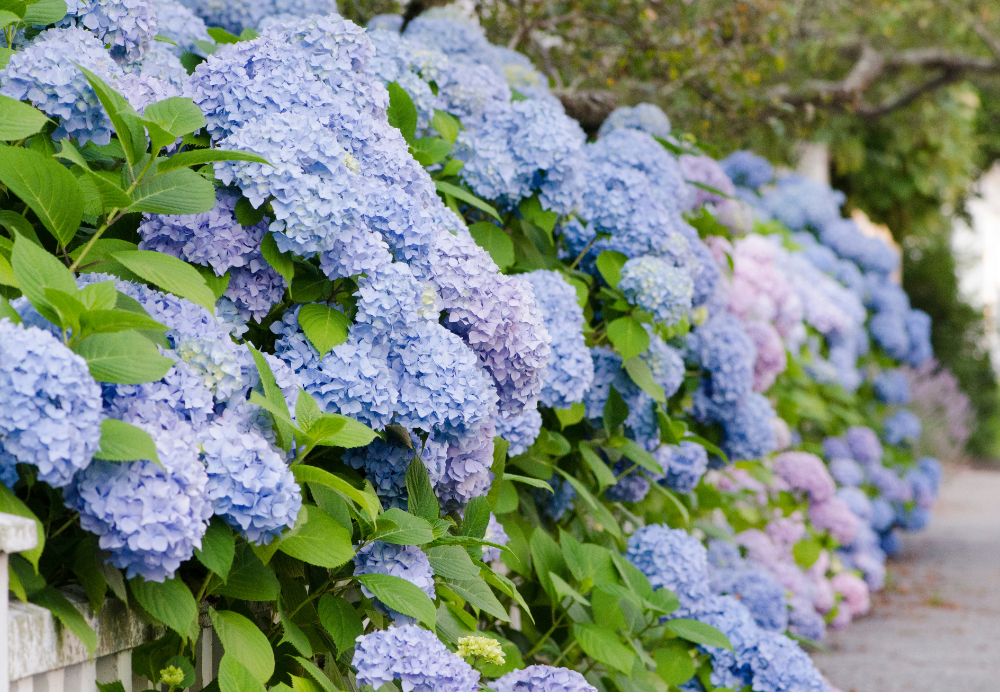
Botrytis Blight
Also known as gray mold, Botrytis blight is a common fungal infection that thrives in cool, wet conditions. It manifests as grayish-brown fuzzy mold on flowers, buds, leaves, and stems. The disease causes the flowers to brown and decay, and in humid conditions, the gray mold is easily visible. Leaves and stems can also develop dark, water-soaked spots.
Leaf Spot
Leaf spot diseases, caused by various fungi and bacteria, present as circular spots on hydrangea leaves. These spots often have a purple or brown edge and a gray or tan center. Over time, the affected leaves might yellow and drop off, which can weaken the plant significantly. Different fungi can cause leaf spots, so the appearance of the spots can vary slightly depending on the pathogen involved.
Rust
Rust is another fungal disease recognizable by the orange or rusty-colored spores that appear on the undersides of hydrangea leaves. The top surfaces of the affected leaves show yellow or pale green spots. As the disease progresses, leaves may curl and drop, weakening the plant over time.
Anthracnose
This fungal disease is marked by large, irregular brown or black spots on leaves, often with a lighter tan or gray center. Anthracnose can cause extensive leaf drop and can be particularly destructive in wet, warm weather. The spots may merge, leading to large areas of dead tissue, and in severe cases, it can infect stems and flowers, leading to a general decline in plant vigor.
Root Rot
Many fungus that flourish in too wet soil conditions cause root rot. Since it damages the plant at its base, causing rotten, mushy roots, it is among the more severe diseases. Symptoms above ground consist in wilting, yellowing, and slowed development. The plant might also seem to be drought-stressed given sufficient soil moisture.

Bacterial Wilt
Microbes that block the flow of water and nutrients in the plant’s vascular system cause bacterial wilt. First symptoms are the wilting of fresh growth, which finally advances to older leaves. The stems might be sticky and show a darkened vascular area when cut.
Knowing these common diseases will help you to keep better control over your hydrangeas and act early should any symptoms develop. Regular inspections will guarantee your hydrangeas remain a highlight in your garden and help you maintain their best state of health.
Preventive Measures and Cultural Practices
Preventing diseases in hydrangeas begins with adopting sound cultural practices and establishing a healthy growing environment. By taking proactive measures, gardeners can significantly reduce the incidence of diseases and ensure that their hydrangeas remain vibrant and robust.
Here, we discuss essential preventive steps and cultural practices that can help keep hydrangeas flourishing and disease-free.
Choosing the Right Location
Hydrangeas thrive in locations that offer morning sunlight and afternoon shade, particularly in warmer climates. Ensuring adequate sunlight helps to keep the foliage dry and less susceptible to fungal diseases like powdery mildew. The ideal spot also has well-draining soil, as poor drainage can lead to root rot and other moisture-related diseases.
Soil Preparation and Maintenance
Before planting hydrangeas, enrich the soil with organic matter to improve its structure and drainage capabilities. A well-prepared soil not only supports healthier root growth but also helps in maintaining the right moisture balance. Regularly check the soil pH and adjust it if necessary, as the correct pH is crucial for hydrangeas to absorb nutrients effectively, making them less prone to stress and diseases.
Watering Techniques
Deeply but seldom water hydrangeas to promote robust root growth. Watering at the base of the plant is best practice; avoid overhead watering to prevent moisture on the leaves and encourage fungal infections. Make sure the plants get enough water during dry spells to avoid stressing them since stressed plants are more prone to diseases.
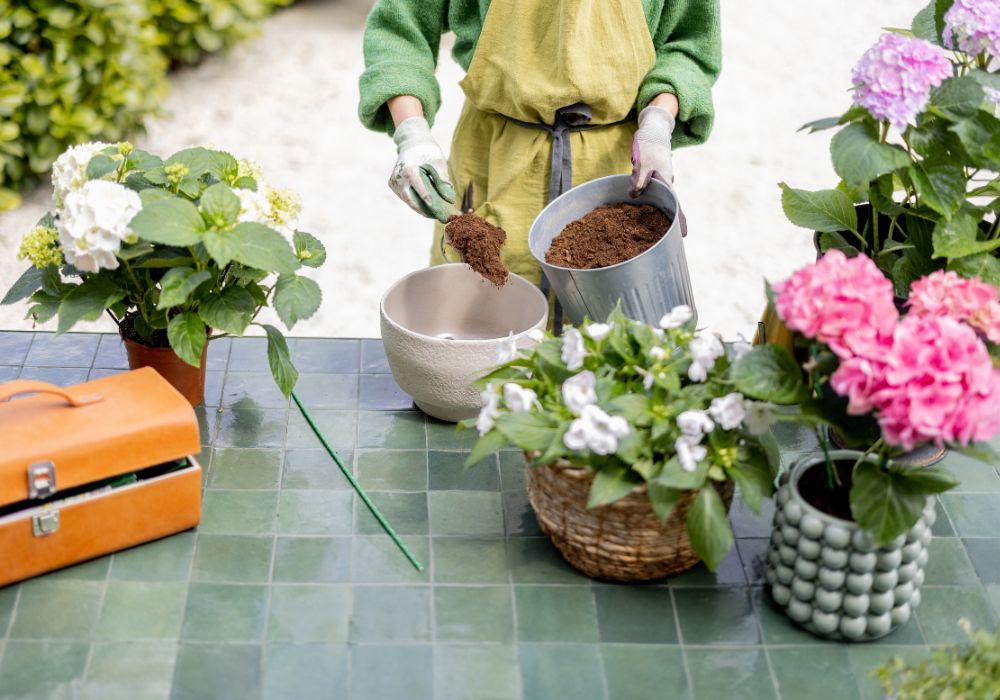
Mulching and Weed Control
Around the base of hydrangeas, lay organic mulch to help retain soil moisture, control weeds, and offer nutrients as it breaks down. Mulch also helps to maintain a constant soil temperature and stops soil from splashing onto leaves, so lowering the possibility of soil-borne diseases. Clear the area surrounding hydrangeas of trash and weeds so as to avoid inviting pests and diseases.
Pruning and Cleanup
Maintaining hydrangeas’ health and form depends on correct pruning. Eliminate dead or sick branches right away to stop infections from spreading. Pruning should take place early spring or late winter before fresh development begins. This not only shapes the plant but also enhances air circulation, which is essential for maintaining dry leaves and reduced susceptibility to diseases. Regularly clean fallen trash and leaves from all around the plants to reduce the possibility of disease carryover from one season to the next.
Fertilization
Based on their particular requirements, fertilize hydrangeas; usually, this means a balanced, slow-release fertilizer sprayed in early spring. Steer clear of overfertilizing since too much growth might increase a plant’s susceptibility to pests and diseases. To keep your hydrangeas healthy and well-nourished, customize your fertilizing schedule to fit their stages of growth and bloom.
Regular Monitoring and Early Intervention
Check hydrangeas often for indicators of pests or disease. Effective management depends on early identification, which also helps to often prevent little problems from turning into major ones. If you develop any symptoms, acting right away will help to control the illness and guard your plants.
Including these preventative steps and cultural practices into your gardening schedule will help you create conditions whereby hydrangeas not only survive but flourish. Such proactive maintenance not only improves the appearance of your garden but also guarantees the lifetime and health of some dear plants.
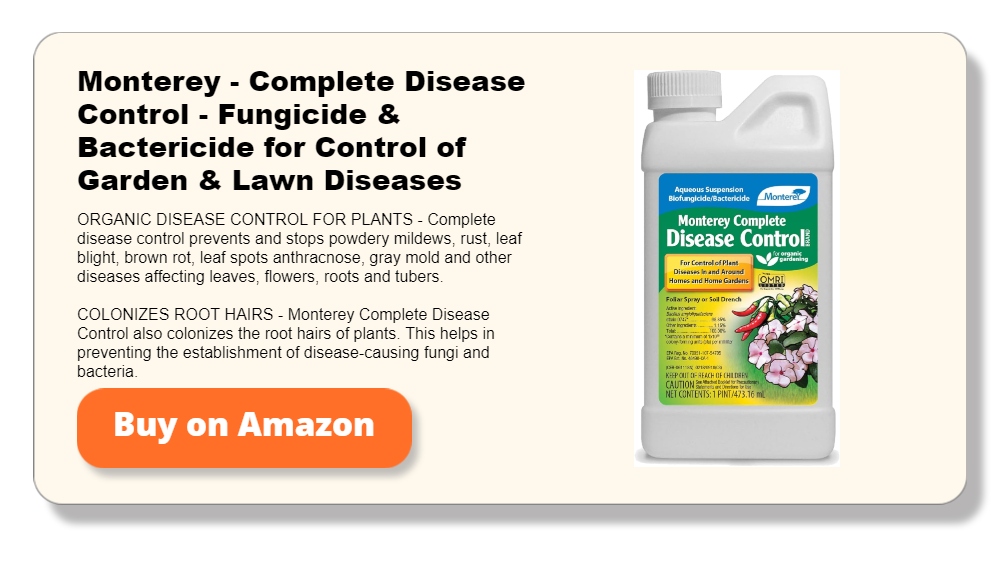
Advanced Treatment Options
When basic cultural practices and preventative measures are not enough to keep hydrangea diseases at bay, advanced treatment options may be necessary. These treatments, ranging from organic remedies to more potent chemical solutions, are designed to effectively combat and control the progression of diseases in hydrangeas. Here we explore various advanced treatment strategies that gardeners can employ to ensure their hydrangeas remain healthy and vibrant.
Organic Remedies
Many gardeners looking to minimise their environmental impact and efficiently control plant diseases choose organic treatment solutions.
- Neem Oil: One flexible organic treatment that functions as both an insecticide and a fungicide is neem oil By preventing spore germination and growth, it is successful against powdery mildew and can help control other fungal diseases.
- Baking Soda Sprays: A mixture of baking soda combined with water and a mild detergent—can help ward against fungal diseases including powdery mildew. The mixture changes the pH on the leaf surface, which lessens its appeal to fungus.
- Milk Sprays: A mixture of milk and water sprayed on hydrangea leaves helps to control fungal diseases. The antifungal qualities of the milk’s proteins help to stifle mold growth.
Chemical Treatments
Chemical treatments could be required in cases where organic remedies prove inadequate. These should be handled carefully and as advised to prevent harm to the surroundings and the plant.
- Systemic Fungicides: Systemic fungicides can offer long-lasting defense against a spectrum of fungal diseases. Fighting root rot and other soil-borne diseases especially benefits from systemic fungicides.
- Contact Fungicides: Applied straight to the afflicted areas, contact fungicides are efficient in treating obvious symptoms of diseases including rust and leaf spot. Working by killing the fungal spores on contact, contact fungicides stop the disease from spreading farther.
- Broad-Spectrum Pesticides: Broad-spectrum pesticides are available for severe problems connected to pests. These should, nevertheless, be a last resort since their possible effects on surrounding ecosystems and beneficial insects could be detrimental.
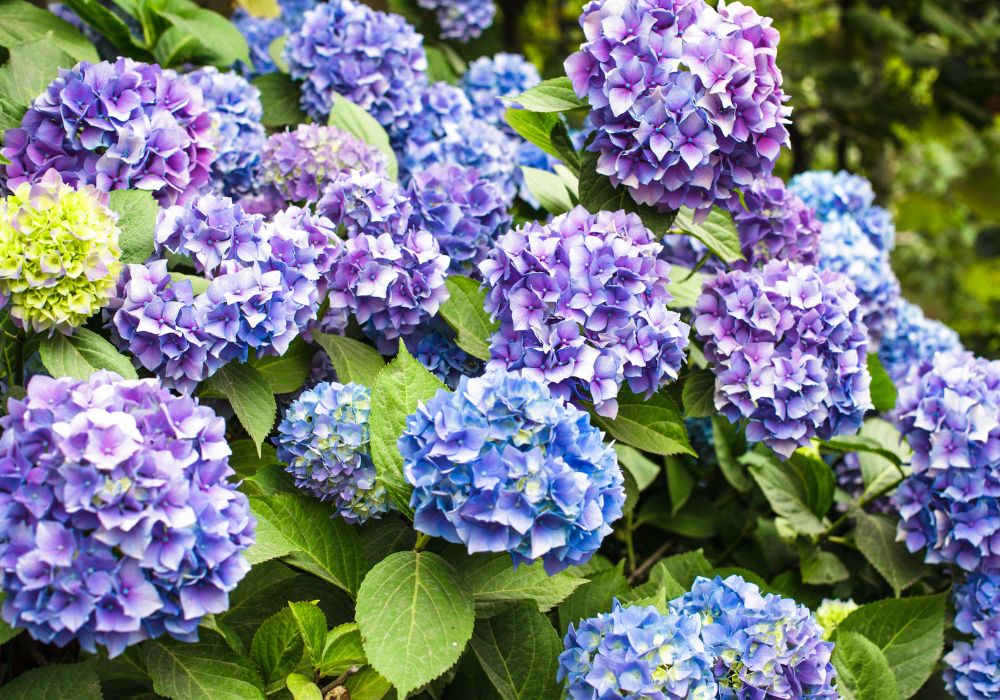
Integrated Pest Management (IPM)
IPM is a holistic approach that combines cultural, biological, and chemical tools in a way that minimizes economic, health, and environmental risks.
- Biological Control: Introducing natural predators or beneficial microbes that combat specific pests or diseases can be an effective part of an IPM strategy. For example, introducing ladybugs to control aphid populations on hydrangeas.
- Mechanical Controls: These include techniques such as removing infected plant parts or using water sprays to remove pests from the plant. Mechanical controls are often the first line of defense before resorting to chemical treatments.
Tailored Treatment Plans
Creating a tailored treatment plan involves monitoring the specific conditions and challenges faced by your hydrangeas. This might include:
- Regular Diagnostics: Keep an eye on plant health and be ready to adjust your approach based on seasonal changes and emerging issues.
- Weather Considerations: Adjusting treatment applications based on weather conditions can greatly enhance their effectiveness. For example, applying fungicides after heavy rainfall when fungal diseases are most likely to spread.
By utilizing a combination of these advanced treatment options, gardeners can effectively manage and mitigate disease issues in their hydrangeas. It’s important to always follow the manufacturer’s instructions and local regulations when applying any chemical treatments to ensure safety and effectiveness.
Monitoring and Maintenance
Maintaining the health of your garden plants calls both constant observation and continuous upkeep. This proactive approach guarantees early identification of possible problems and efficient management of them so preserving the beauty and vitality of your garden. Key techniques for tracking and preserving plant health will help you to make sure your garden stays a vibrant and interesting place.
Regular Inspection
Early diagnosis of pests, diseases, or environmental stress depends on routinely checking your plants. Look for symptoms including unusual leaf spots, stunted development, or discoloured leaves. Ideally weekly, these inspections should be exhaustive and frequent to find problems before they get serious.
Seasonal Care
Seasonal care adjustments are crucial for keeping plants healthy throughout the year. This includes:
- Spring: Focus on pruning to remove any dead or diseased branches, which helps promote new growth and improves air circulation.
- Summer: Ensure plants have adequate water, especially during hot, dry periods. Mulching helps retain soil moisture and keeps roots cool.
- Fall: Clean up fallen leaves and debris to prevent the spread of fungal diseases and pests that can overwinter.
- Winter: Provide protection from frost and cold winds, if necessary, by using burlap wraps or other insulating materials.
Fertilization Schedule
Key is to apply a correct fertilization schedule depending on the particular requirements of your plants. Overfertilization can cause too much growth that attracts pests and diseases. On the other hand, underfertilization might weaken plants. To encourage good development and blooming, use the suitable type and amount of fertilizer and apply it at best times during the growing season.
Record Keeping
Maintaining thorough records of plant care operations, including watering, fertilizing, pruning, and any treatments rendered, can be quite helpful This historical information tracks what has worked well and offers ideas for next treatment plans.
Following these maintenance and monitoring guidelines will help you to guarantee that your garden stays under control and healthy. The foundations of a good garden are regular attention and appropriate care, which results in strong plants able to naturally fight pests and diseases.
Conclusion
Hydrangeas require constant maintenance including appropriate watering, fertilizing, and pruning in addition to careful pest and disease control. These initiatives guarantee hydrangeas’ continued health, brilliance, and ability to create their distinctive rich blossoms. Garden management done pro-actively helps these amazing plants flourish in many different environments and conditions.

